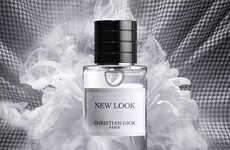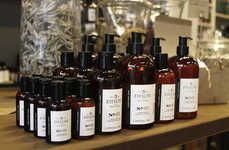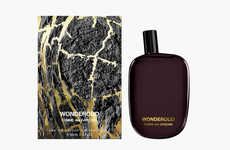
The 'Inside Chanel N°5' Film Goes Behind the Scenes
References: inside.chanel & fashionotes
The 'Inside Chanel N°5' clip provides an audio-visual history of the couture perfume label. The timeless fragrance has been stocked at international department stores since its release in 1921 with no end in sight to its production.
The story behind Gabrielle 'Coco' Chanel's foundation of the N°5 product is perhaps as delectable as the scent itself. The film reveals that the icon teamed up with Russian fragrance expert Ernest Beaux who went as far as the arctic circle in search of jasmine, sandalwood and orange blossom extracts.
Together Coco and Beaux produced a concoction that borrowed from 80 different ingredients, a revolution given the common output of aromas that were exclusively rose, mimosa, violet or peony-based.
The intermingling of multiple notes within a single bottle was unthinkable at the time. And yet, the brand managed to market it with ease. Chanel N°5 soon became the focus of The Museum of Modern Art (MoMA) and of Andy Warhol's silk screen depictions.
The story behind Gabrielle 'Coco' Chanel's foundation of the N°5 product is perhaps as delectable as the scent itself. The film reveals that the icon teamed up with Russian fragrance expert Ernest Beaux who went as far as the arctic circle in search of jasmine, sandalwood and orange blossom extracts.
Together Coco and Beaux produced a concoction that borrowed from 80 different ingredients, a revolution given the common output of aromas that were exclusively rose, mimosa, violet or peony-based.
The intermingling of multiple notes within a single bottle was unthinkable at the time. And yet, the brand managed to market it with ease. Chanel N°5 soon became the focus of The Museum of Modern Art (MoMA) and of Andy Warhol's silk screen depictions.
Trend Themes
1. Multifaceted Fragrances - Opportunity for brands to explore complex scent combinations and revolutionize the perfume industry.
2. Sustainable Ingredient Sourcing - Incorporating ethically-sourced ingredients in the perfume-making process can attract eco-conscious consumers who prioritize sustainability.
3. Brand Heritage Storytelling - Sharing the historical roots and inspiration behind a brand's signature product can help build a sense of loyalty and brand identity.
Industry Implications
1. Fragrance - Perfume companies can innovate with multifaceted and sustainable perfume-making practices to meet evolving consumer demands.
2. Beauty - Incorporating natural, ethically-sourced ingredients into other beauty products such as skincare and cosmetics can appeal to eco-conscious consumers.
3. Cultural Institutions - Museums and galleries can increase awareness of their collections by collaborating with iconic brands to showcase the cultural significance of certain products.
1.9
Score
Popularity
Activity
Freshness















